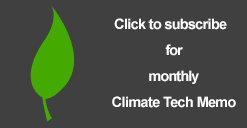Progress Scoring (Part 3) … Sales progress creation

First, a sales process is something to howl about, since it enables faster sales progress creation. Your customers will notice it, and complement you for it. As a result, the boost to your sales will be a pleasure to behold. Your sales family will improve their business acumen – and have more occasions to howl.
Yes, for multiple reasons a structured sales process needs to be in place. It will need continuous refinement and improvement, driven by ongoing success and failure analysis. Sales Management should conceive and implement the resulting sales process design.
Woops … all this is easy to say, yet may be hard to do in your company.
Why would this be hard? Difficulty can arise from
- Customers who say “We have the budget, and the procurement should be easy”
- Sales people who believe it
- Sales managers who don’t act paranoid, and assume there will be decision resistance. They don’t ask the tough questions of their sales team, for each opportunity. Questions like “How can we win the end game?” and also “How could we lose?”
Tailor the sales process to your business and products, taking account of the maturity of your product category. Then repeat usage of the sales tools you have found to be leading indicators of success. When gathering information from customers, the keys ideas and insights usually come in randomly, out of sequence. However, your sales results will be better if you follow a structured sequence to play out the sales tools. And remember, sales tool usage should be visible and traceable. Scoring systems are easier to design and more accurate with tangible things to score.
First, we’ll describe a really simple sales process. This one assumes there is a Qualification, then six active elements of success. If you are starting from scratch, get the team around a table for 2 hours. For maximum impact, tailor this to your business.
A simple “Sales Process” – the elements of sales progress creation
Although this is only one page, it needs open debate until the central ideas and words are agreed. What are the actions and tools that cause sales progress creation, in your unique business? These are the actions that can be stages in your process – tangible things done to create progress. Make a plan to do them on every sales opportunity. Here is an example:
- “Qualified” – A strong champion is engaged, with a problem to solve, and funding available.
- “Pain Points” – Customer needs are discussed in detail, finding several pain points that we can solve – write them down as “Discussion of Critical Issues” (or similar) and send them to the customer, for follow up comment and confirmation.
- “Payback / Business Case” – Based on account research and prospect/customer discussions, summarize the measurable info about how your solution can contribute a payback or acceleration of the buyer’s business. Write it down and send it to the customer for comment. Follow up.
- “Time Drivers” – You will also have gathered info on what scheduled events, like quarter ends, product/project release dates, and production targets are driving the annual rhythm of the customer’s overall business. In addition, to avoid stalled deals, ensure your proposal supports multiple time driver events.
- “Proposal – Framing the offer” With all the above defined info, you can usually tell if you have a winner or not – if “no” don’t make a proposal. If “yes” frame a proposal as a customer Project that fits all the circumstances. Then present it.
- “Verbal” closing – i.e. the unique work you do in each case to get all the customer’s internal support in place and signed off as needed. Declare Verbal Order only when there is no work or persuasion to be done by the customer’s internal team, other than procurement paperwork.
- “Closed/Won” – The last step gains the remaining portion of the 100% available score.
In the next section (Part 4 of 4), we discuss how to allocate a scoring value to each stage of Progress or Partial Progress.



Follow Us
Follow us on LinkedIn for updates.